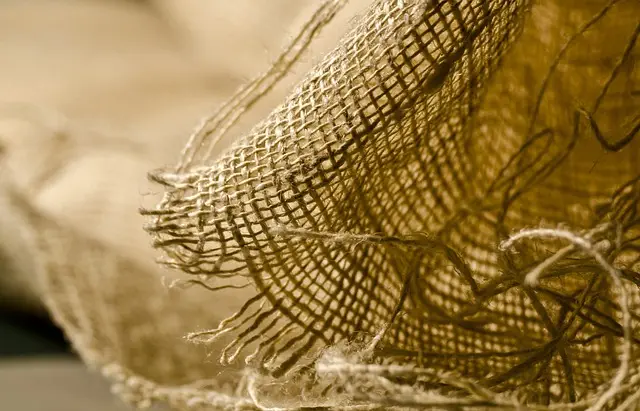Red Bali Kratom and Maeng Da Kratom are both well-known for their pain-relieving capabilities, particularly in addressing muscle soreness. Red Bali Kratom offers a strong analgesic effect due to its high levels of alkaloids like mitraphylline and 7-hydroxymitragynine, which users find particularly effective for chronic pain and relaxation. Its soothing nature makes it a preferred choice for those seeking relief from muscle discomfort, especially after physical activity or as a remedy for persistent pain. On the other hand, Maeng Da Kratom, with its high alkaloid content, provides a more balanced experience that combines energy and calm, making it suitable for active individuals who need to manage pain throughout their day. The unique alkaloid profile of Maeng Da allows for effective pain relief without overwhelming sedation, catering to a variety of users' needs. Both strains have historical and contemporary uses in traditional and modern medicine, with studies supporting their analgesic properties. Users often explore these strains individually or in combination to tailor their experience for optimal muscle soreness relief based on personal preferences and tolerance.
Exploring the natural remedies for muscle soreness, this article delves into the potential of kratom, specifically comparing Red Bali Kratom and Maeng Da. Both strains are renowned for their analgesic properties, prompting a detailed examination of their efficacy in alleviating muscle pain. We dissect the interplay between these strains and the mechanisms behind their roles in muscle recovery. Through a comparative lens, user experiences and scientific insights offer a comprehensive analysis of Red Bali Kratom versus Maeng Da for those seeking relief from soreness.
- Unraveling the Effectiveness of Red Bali Kratom versus Maeng Da for Muscle Soreness Alleviation
- Understanding the Interplay Between Kratom Strains and Their Role in Muscle Recovery
- A Comparative Analysis: Red Bali Kratom vs. Maeng Da – User Experiences and Scientific Insights on Pain Relief
Unraveling the Effectiveness of Red Bali Kratom versus Maeng Da for Muscle Soreness Alleviation

Red Bali Kratom and Maeng Da are two popular strains often explored for their potential to alleviate muscle soreness. Both strains have unique alkaloid profiles that may influence their pain-relieving properties. Users report that Red Bali Kratom, with its rich balance of mitraphylline and 7-hydroxymitragynine, provides a soothing and analgesic effect conducive to muscle relaxation and soreness relief. This strain is known for its calming properties, which can be particularly beneficial for those experiencing chronic or post-exercise muscle pain.
On the other hand, Maeng Da Kratom, which translates to “Pimp Grade” due to its high alkaloid content, is celebrated for its potent and energetic effects. It contains a significant amount of 7-hydroxymitragynine and mitraphylline, much like Red Bali, but with variations in their concentrations that might yield different experiences. Users often turn to Maeng Da for its stimulating yet pain-relieving qualities, which can help manage muscle soreness while maintaining a sense of well-being and energy. The choice between Red Bali Kratom and Maeng Da for muscle soreness relief may depend on the individual’s specific needs and desired effects, as both strains offer distinct advantages in this area. Users should consider their tolerance, the severity of their muscle pain, and personal preferences when deciding which strain to use for optimal relief.
Understanding the Interplay Between Kratom Strains and Their Role in Muscle Recovery

When exploring the realm of muscle soreness relief, particularly in the context of natural remedies, kratom emerges as a subject of interest due to its various strains and their unique alkaloid profiles. Among these, Red Bali Kratom and Maeng Da Kratom are often contrasted for their effects on muscle recovery. Red Bali Kratom is renowned for its analgesic properties, which can help mitigate the discomfort associated with muscle soreness. Its calming effects may also aid in relaxation, allowing for better rest and recovery post-exercise. This strain’s ability to alleviate pain and promote a state of calm can be particularly beneficial for individuals experiencing persistent muscle tenderness.
On the other hand, Maeng Da Kratom is celebrated for its balanced blend of stimulating and sedating effects. It contains a higher concentration of alkaloids compared to other strains, which may contribute to its potent analgesic qualities. Maeng Da is often favored by those seeking a more energetic recovery process without sacrificing pain relief. Its energizing properties can help users maintain focus and motivation during intense training periods, while still offering respite from muscle pain. Both Red Bali and Maeng Da Kratom have their roles in the context of muscle recovery, with individual experiences varying based on dosage, tolerance, and personal physiology. It’s recommended that users experiment with both strains to determine which one aligns best with their specific needs and recovery goals.
A Comparative Analysis: Red Bali Kratom vs. Maeng Da – User Experiences and Scientific Insights on Pain Relief

Users often explore the efficacy of different kratom strains for muscle soreness relief, with Red Bali Kratom and Maeng Da being among the most popular choices. The experiences of users point to notable differences between these two potent mitragynas. Red Bali Kratom is renowned for its sedating properties, which can be beneficial for relieving chronic pain and promoting relaxation. Its alkaloid profile, particularly with high levels of 7-hydroxymitragynine, contributes to this strain’s analgesic effects. Users report a profound sense of well-being alongside significant pain relief when using Red Bali Kratom.
On the other hand, Maeng Da, known for its balanced alkaloid content and stimulating yet relaxing effects, is another favorite among those seeking muscle soreness relief. Scientific insights corroborate user reports that Maeng Da can provide potent pain relief without the same level of sedation as Red Bali. This strain’s unique blend of analgesic and euphoric properties makes it a versatile choice for individuals who require pain management throughout the day, including those engaging in physical activities. Both strains have been traditionally used for their medicinal properties, with modern research further supporting their pain-relieving capabilities. Users often experiment with dosage and strain combination to tailor their experience to their specific needs, with Red Bali Kratom and Maeng Da being at the forefront of these explorations due to their distinct profiles and user-reported effectiveness in managing muscle soreness.
Red Bali Kratom and Maeng Da have both garnered attention for their potential in mitigating muscle soreness. This exploration has shed light on the distinct effects of these strains, with user experiences and scientific insights underscoring the value of careful strain selection for optimal pain relief outcomes. While both options present unique benefits, discerning users may find that their individual preferences and the nature of their muscle soreness inform which kratom strain suits them best. It is clear from the evidence compiled that Red Bali Kratom and Maeng Da each offer pathways to relief, with the choice between them being a personal one informed by empirical data and anecdotal feedback alike. Users are encouraged to approach their use with caution and in accordance with responsible consumption guidelines, ensuring they align with their health goals and circumstances.






